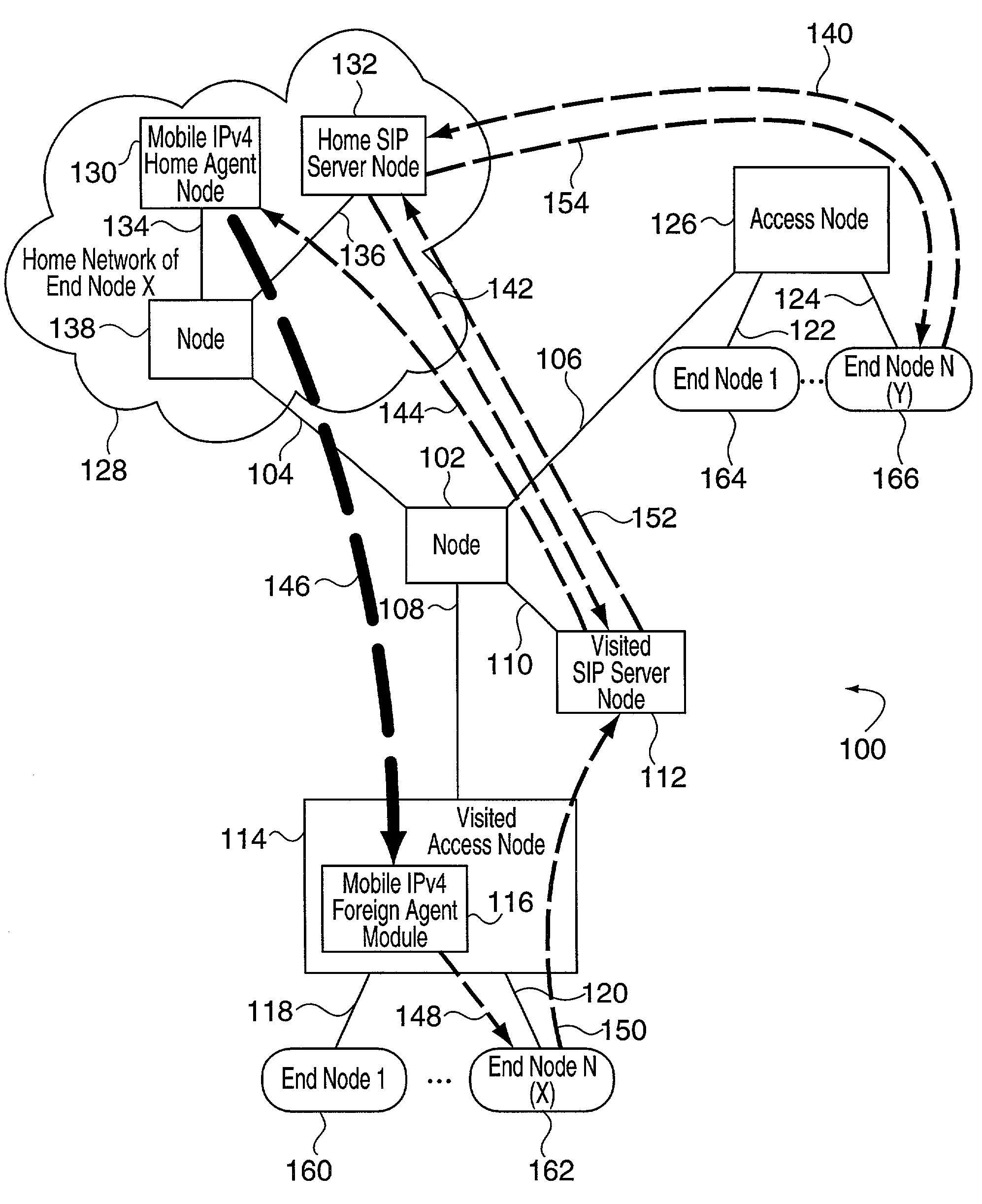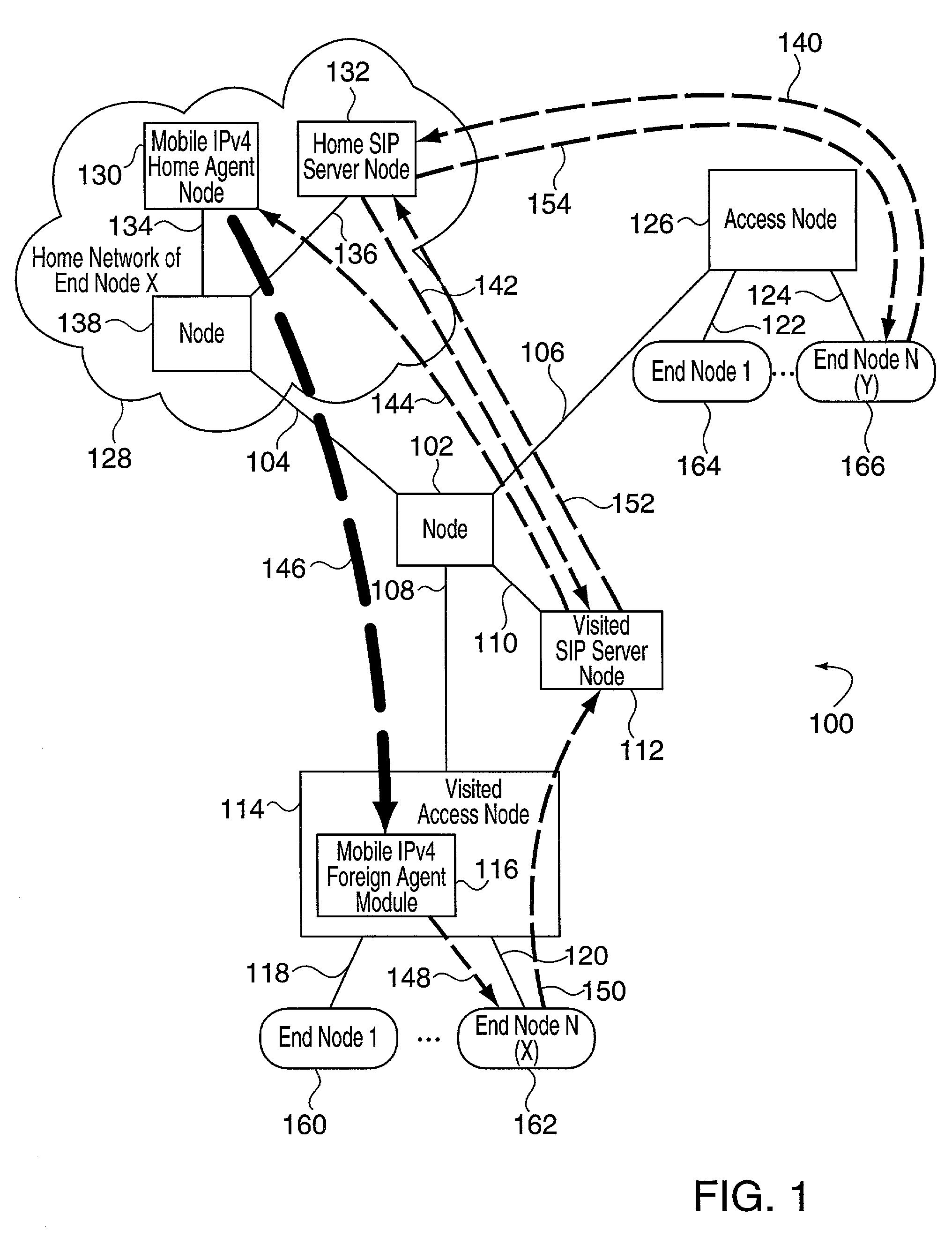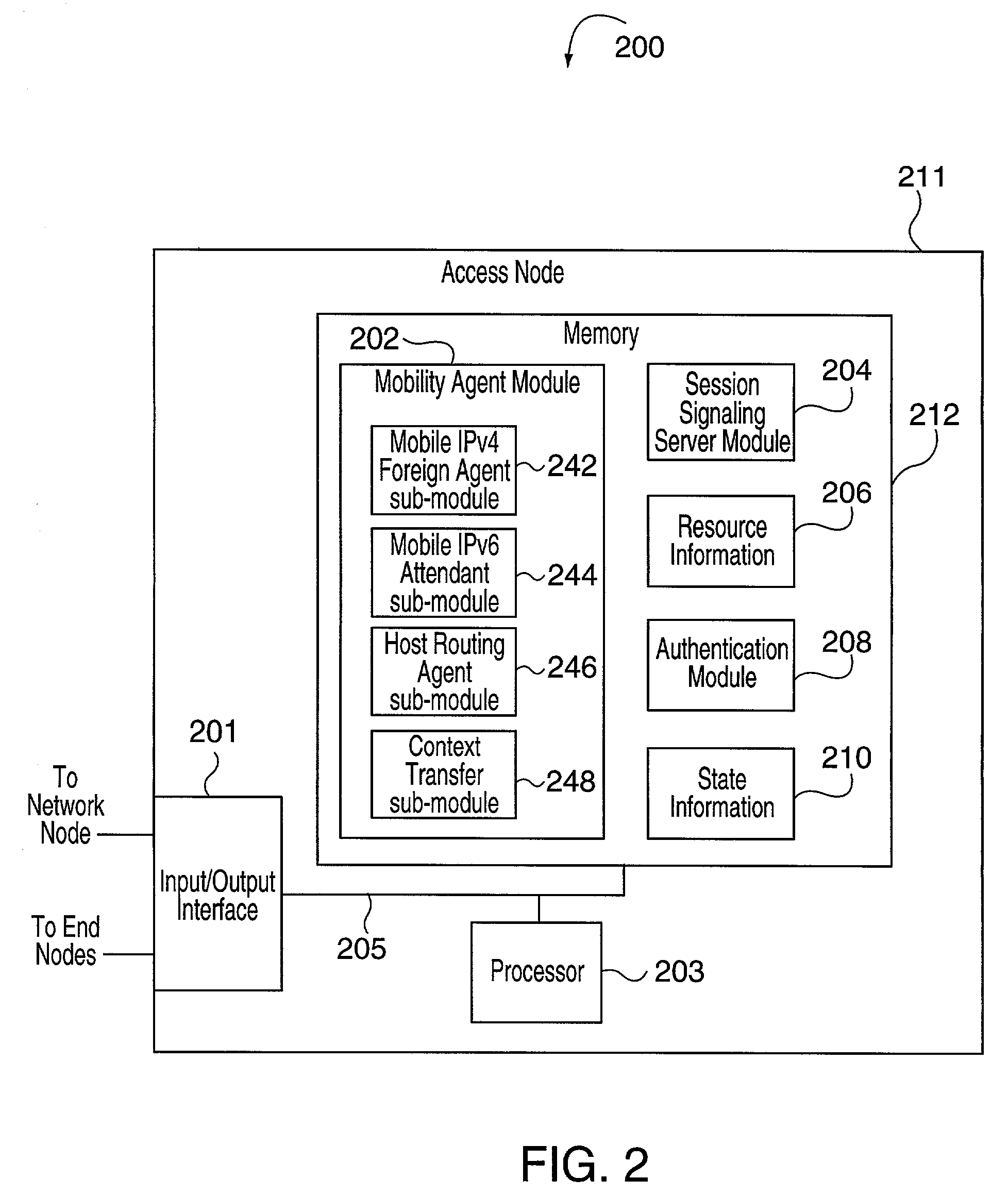Methods and apparatus for supporting session signaling and mobility management in a communications system
a communication system and session signaling technology, applied in the field of methods and apparatus for supporting session signaling and mobility management in a communications system, can solve the problems of increasing the latency associated with the establishment of a data communication session, increasing the bandwidth utilization of network links, and more circuitous response paths, so as to facilitate the use of the same security method, simplify the interaction of end nodes, and reduce the effect of signaling
- Summary
- Abstract
- Description
- Claims
- Application Information
AI Technical Summary
Benefits of technology
Problems solved by technology
Method used
Image
Examples
Embodiment Construction
[0028]FIG. 2 illustrates an exemplary access node 200 implemented in accordance with the present invention. In the FIG. 2 embodiment, the access node 200 includes an input / output interface 201, a processor 203 and memory 212, coupled together by bus 205. The elements 201, 203, 212, 205 of access node 200 are located inside a housing 211, e.g., a case of plastic and / or metal, represented by the rectangle surrounding the node's internal elements 201, 203, 212, 205. Accordingly, via bus 205 the various components of the access node 200 can exchange information, signals and data. The input / output interface 201 provides a mechanism by which the internal components of the access node 200 can send and receive signals to / from external devices and network nodes. The input / output interface 201 includes, e.g., a receiver circuit and transmitter circuit used for coupling the node 200 to other network nodes, e.g., via fiber optic lines, and to end nodes, e.g., via wireless communications channel...
PUM
 Login to View More
Login to View More Abstract
Description
Claims
Application Information
 Login to View More
Login to View More - R&D
- Intellectual Property
- Life Sciences
- Materials
- Tech Scout
- Unparalleled Data Quality
- Higher Quality Content
- 60% Fewer Hallucinations
Browse by: Latest US Patents, China's latest patents, Technical Efficacy Thesaurus, Application Domain, Technology Topic, Popular Technical Reports.
© 2025 PatSnap. All rights reserved.Legal|Privacy policy|Modern Slavery Act Transparency Statement|Sitemap|About US| Contact US: help@patsnap.com



